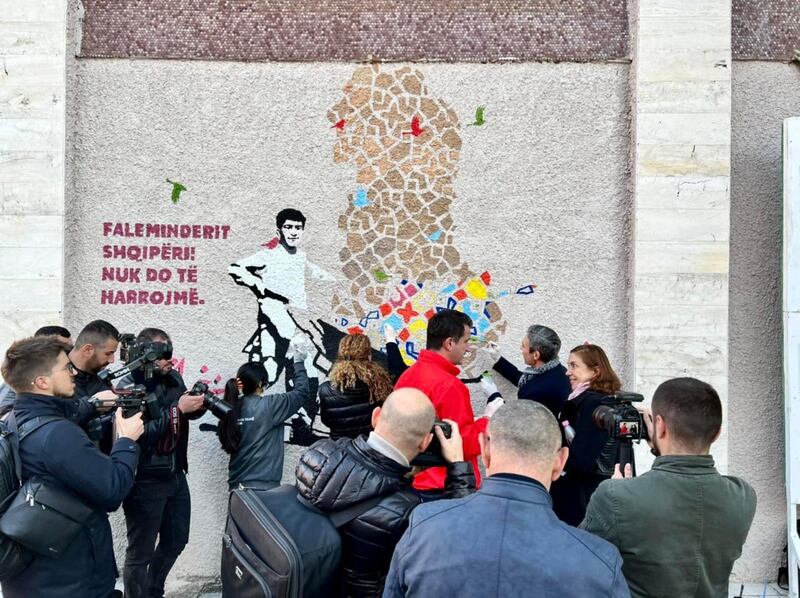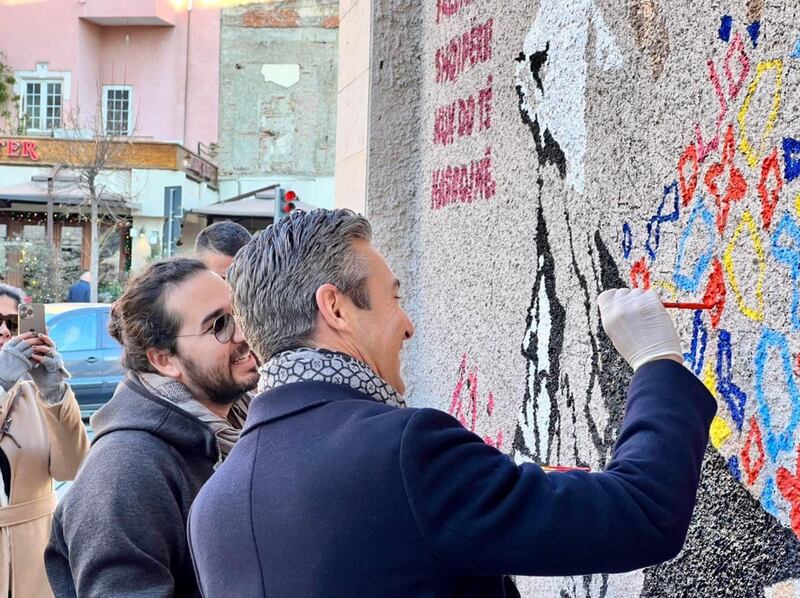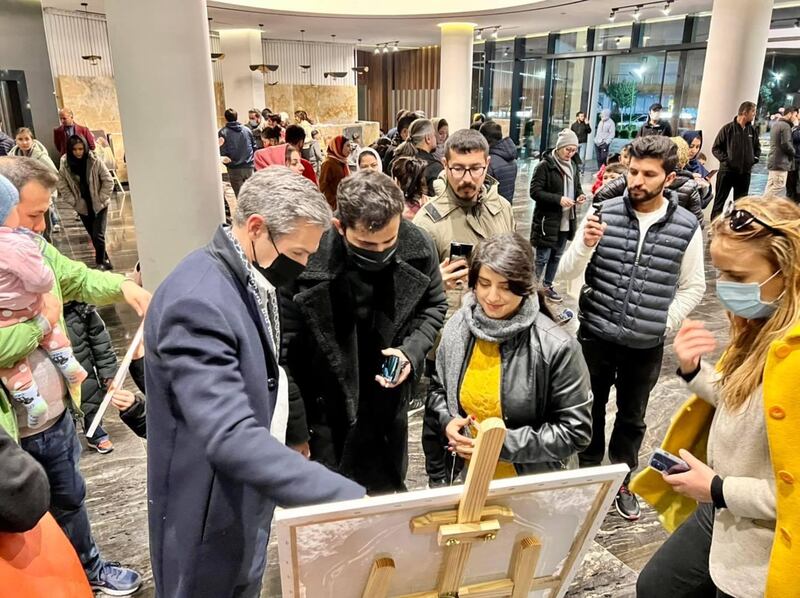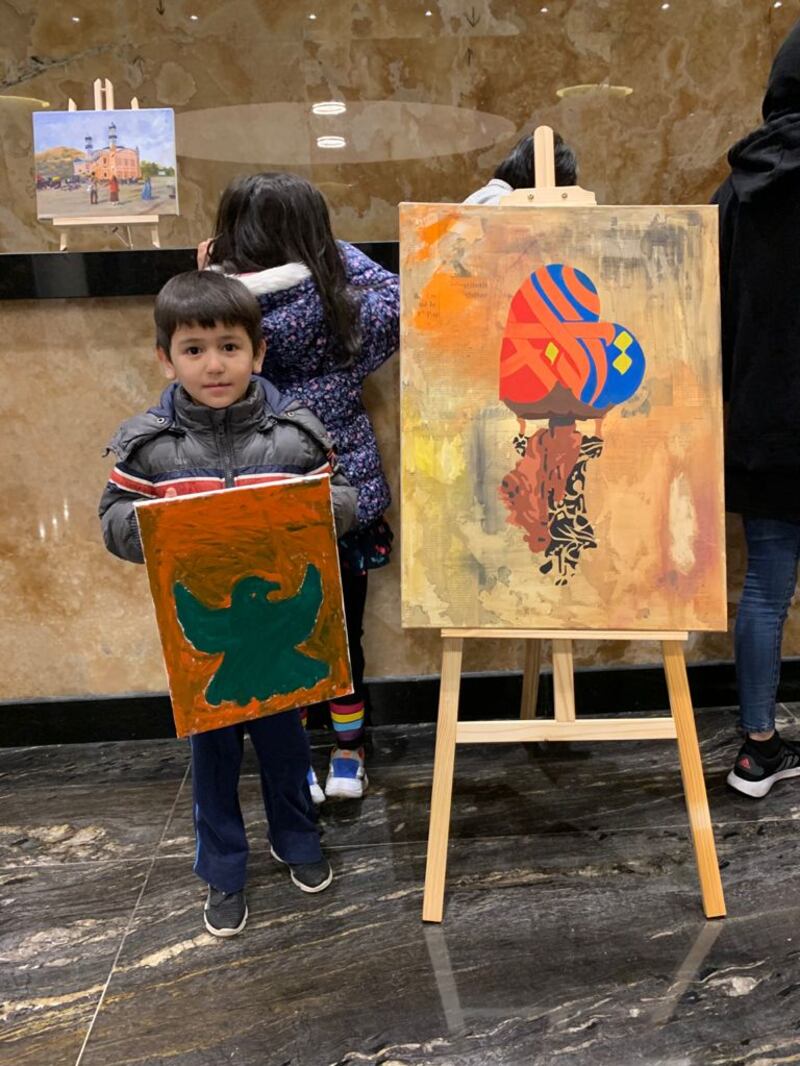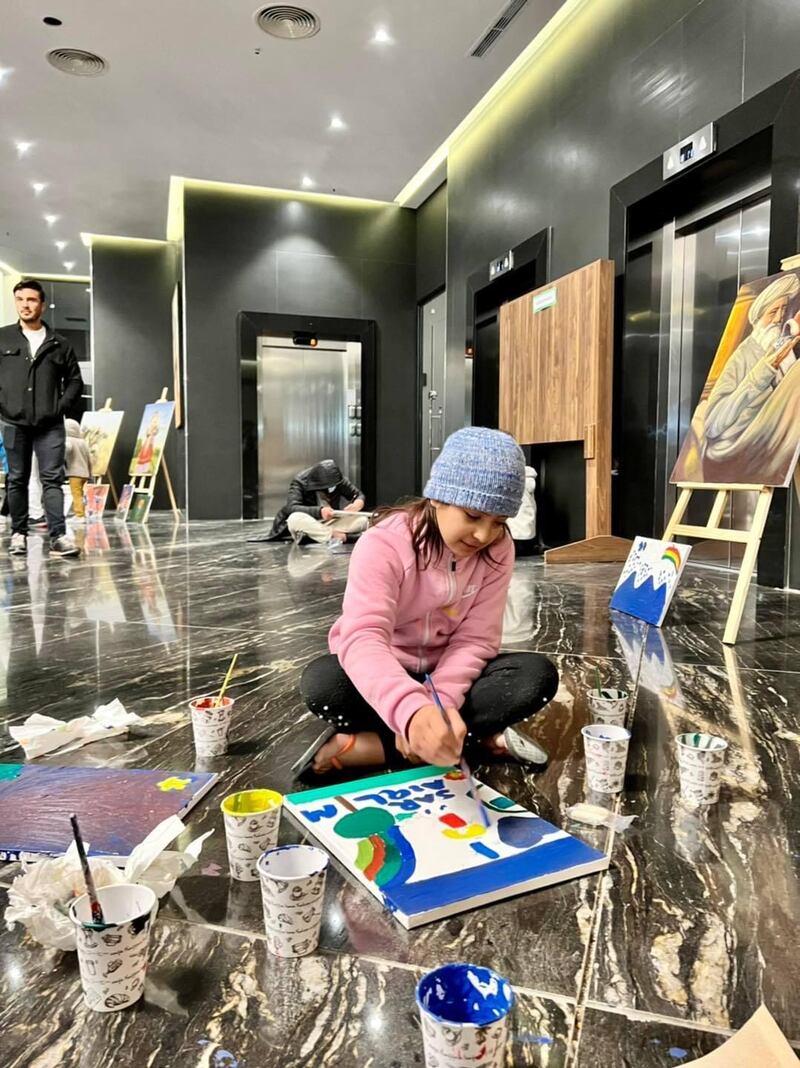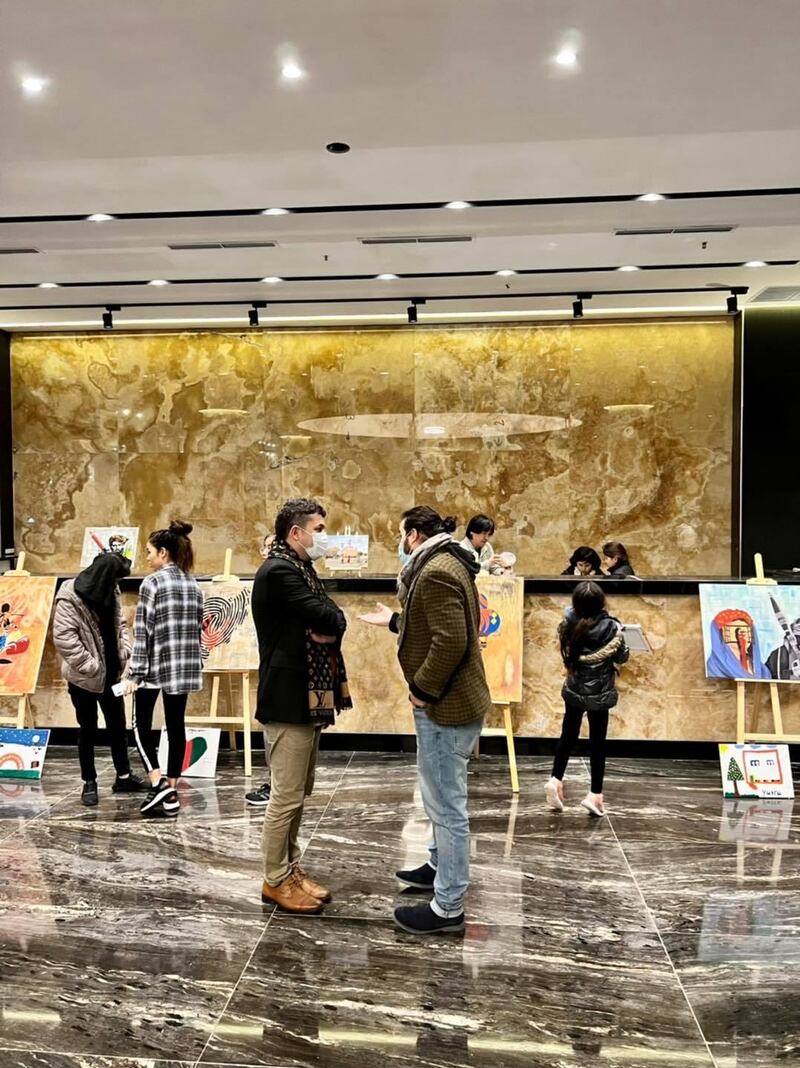Every night, after putting his 2-year-old son to bed, Muhajir sits down in the corner of his family’s small room in a refugee centre in Albania and starts writing in a notebook.
For months he has been documenting his family’s experiences – from their life in Afghanistan to when they fled the country after the Taliban seized power in August. He plans to give the notebook to his children when they are older.
“I write about what we had built, what we lost, and our life in exile. Our children must not forget what we’re going through now,” said the Afghan artist, 28, who gave his name as Muhajir, the Farsi word for refugee.
“For generations Afghans have lived as refugees in this unending conflict. Being a muhajir has become part of our identity; it is now a part of my identity,” he told The National.
'ArtLords'
Among those who sought to escape Afghanistan after the country fell to the insurgents were artists like Muhajir. He worked with an art collective known as the ArtLords – their name is a pun on the warlords who have long been associated with the Afghan conflict.
Muhajir and the collective used art to promote freedom and rights, particularly those of women. Many of these rights have now been stripped away, victims of the Taliban’s extremist ideology.
ArtLords became known for painting hundreds of murals on the thick blast walls that are a common sight across Kabul and the rest of the country.
“What we were doing was a mix of art and activism. It was the first such initiative undertaken in Afghanistan," Muhajir said. "The stories that we told, the pictures that we created came from the depths of the society that had been deeply impacted by war."
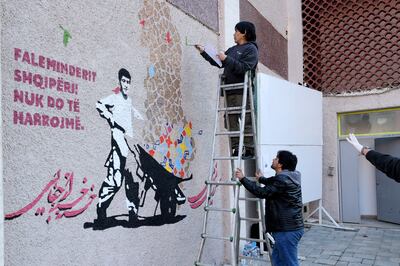
When Kabul fell, the group was preparing for an exhibition in the UAE.
“I had my passport and visa. I was very excited as it would have been my first trip out of Afghanistan. But we lost everything when the Taliban came, and I was evacuated to Abu Dhabi as a refugee, instead of the artist I was supposed to visit as,” he said.
In painting directly on Kabul's blast walls, the collective sought to revive art in Afghanistan after decades of conflict.
“We were trying to revive that culture and normalise art for Afghans by bringing art directly to them – in the streets, outside government buildings, in the schools, at the traffic junctions,” Muhajir said.
Taliban threats
Negina Azimi, another artist now living in exile in Albania, recounted the terrifying ordeal of the Taliban takeover, during which years of the collective’s hard work were undone in a matter of days.
“When the Taliban entered Kabul, I rushed home to remove my paintings from the walls. My father and I removed each piece from its frame, rolled it and stashed it away where no one could find them,” she said.
“We used to receive threats from the Taliban because many of our paintings portray faces – which the Taliban are strongly against.”
Because so much of their work was out on the streets of Kabul, hiding the few paintings they could did little to lessen the threats from the militants.
They had no choice but to flee as Taliban fighters began destroying their murals.
“It was so painful to watch them whitewash our works one by one. It hurt so much,” Azimi said.
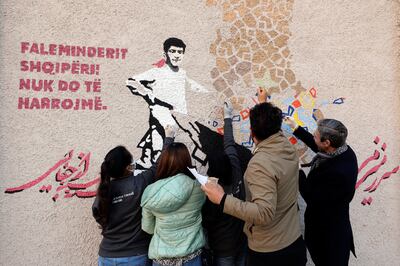
Muhajir said he felt the same.
“Every time I looked at one of the murals, it was a world of colours to me that was created by Afghans, for Afghans,” he said.
“Each one held so many memories – we would invite passers-by and street children to join us in painting, get their views on the art and even share meals with them.
“They have now demolished those and replaced them with black-and-white words, taking away the colour from the lives of our people.”
Even in their newfound exile, Afghanistan's artists have continued to work.
Using the few tools and art supplies they carried out of the country with them, Muhajir and Azimi have been creating new pieces that depict their grief about the situation in Afghanistan today.
‘Like poetry for our eyes’
Azimi’s most recent creation, a painting of a woman wearing a scarf and carrying an enlarged heart above her head, is a “testimony to the social burden Afghan women face for their love of their country,” she said.
On the streets of Tirana, the Albanian capital, and in the town of Shengjin where the Afghan refugees are being housed, Azimi and Muhajir have painted murals.
As in Kabul, the artists invited local people to help paint the murals.
Albania’s Foreign Minister, Olta Xhacka, and Tirana Mayor Erion Veliaj also lent a hand.
“The paintings show a person carrying a colourful depiction of the Afghan and Albanian map in a traditional wheelbarrow – a token of the diversity of Afghanistan that we carried to Albania,” Muhajir said.
“It is accompanied with words from a popular song by Afghan singer Dawood Sarkhosh: ‘Be Aishiana gashtam ... khana ba khana gashtam” which means 'I have lost my homeland … I’m searching for it house to house',” Azimi added.
ArtLords also held an exhibition of their work in the refugee centre in Shengjin.
Albanians and refugee Afghans attended the show in large numbers, and the artworks evoked strong emotions among those who saw them.
A part of the event was dedicated to the many Afghan children now living in exile, encouraging them to create art and paint.
“It was like being back in Kabul once again – surrounded by colours," said one Afghan refugee who attended the exhibition. "It was like poetry for our eyes, but our eyes were full of tears."
Hostile environment
The Taliban have been open about their hostility towards Afghanistan’s artists.
Almost as soon as the militants took power in Kabul they began whitewashing murals.
They have also banned music in several parts of the country and were recently reported to have destroyed instruments belonging to local performers.
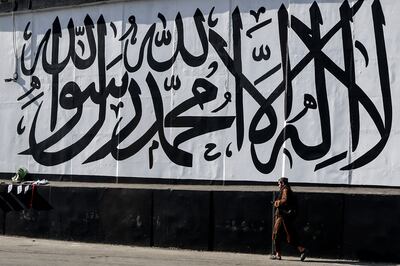
Despite the increasingly restrictive environment, Afghan artists continue to find strength in their work.
“Art is our weapon, and while we are fighting from here, our colleagues who are still in Afghanistan are using it to resist from there,” Muhajir said, adding that some had started calligraphy businesses since that was one form of art that was tolerated by the Taliban.
“They are persevering against the odds, and watching them gives me hope that one day we can return and revive the art culture of our country,” he said.
Azimi said she hoped to return to Kabul one day.
“l will take those canvasses I hid and put them back on the walls. We will go out and repaint the murals on the streets of our cities again,” she said.
